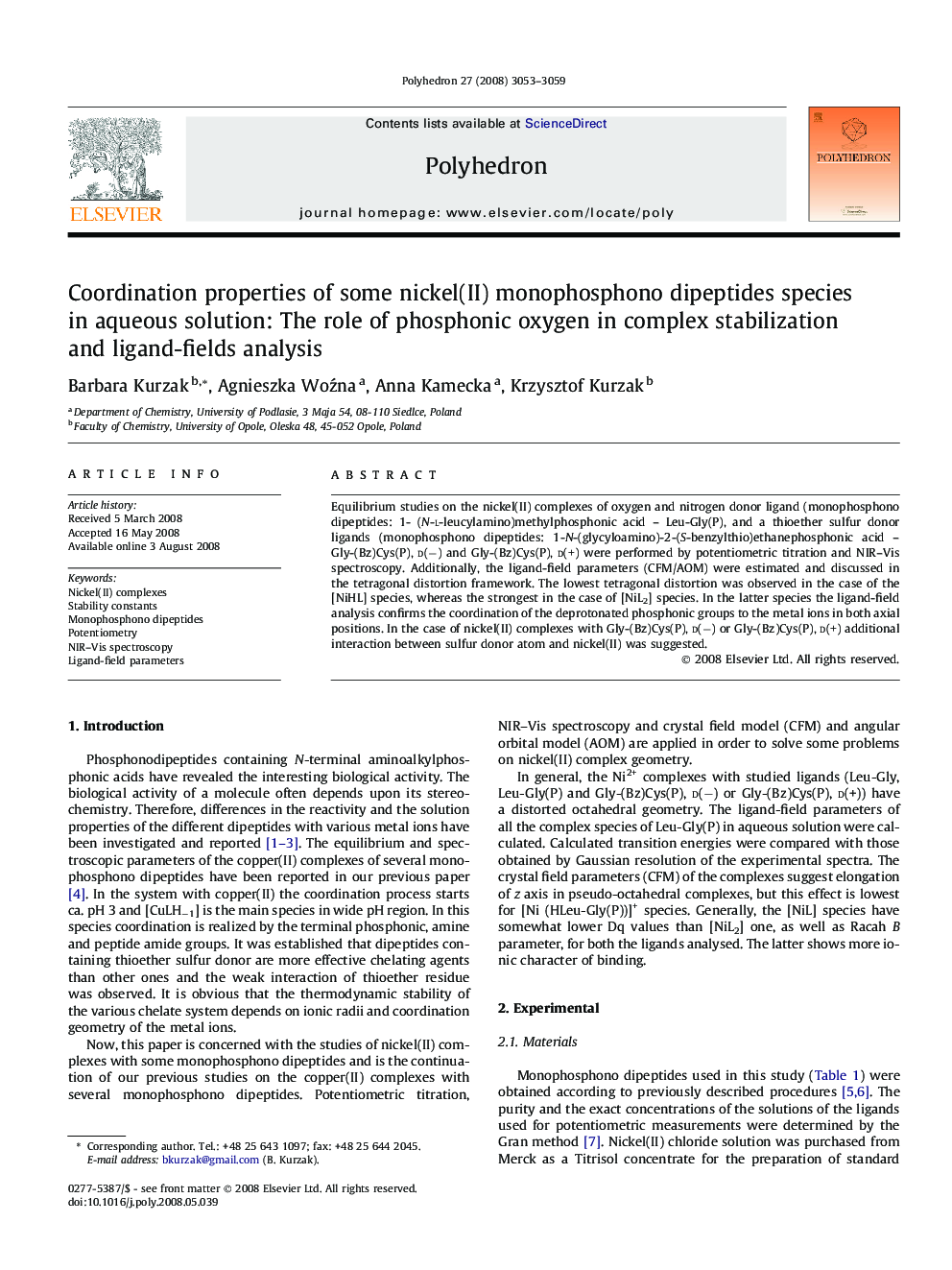| Article ID | Journal | Published Year | Pages | File Type |
|---|---|---|---|---|
| 1340377 | Polyhedron | 2008 | 7 Pages |
Equilibrium studies on the nickel(II) complexes of oxygen and nitrogen donor ligand (monophosphono dipeptides: 1- (N-l-leucylamino)methylphosphonic acid – Leu-Gly(P), and a thioether sulfur donor ligands (monophosphono dipeptides: 1-N-(glycyloamino)-2-(S-benzylthio)ethanephosphonic acid – Gly-(Bz)Cys(P), d(−) and Gly-(Bz)Cys(P), d(+) were performed by potentiometric titration and NIR–Vis spectroscopy. Additionally, the ligand-field parameters (CFM/AOM) were estimated and discussed in the tetragonal distortion framework. The lowest tetragonal distortion was observed in the case of the [NiHL] species, whereas the strongest in the case of [NiL2] species. In the latter species the ligand-field analysis confirms the coordination of the deprotonated phosphonic groups to the metal ions in both axial positions. In the case of nickel(II) complexes with Gly-(Bz)Cys(P), d(−) or Gly-(Bz)Cys(P), d(+) additional interaction between sulfur donor atom and nickel(II) was suggested.
Graphical abstractEquilibrium studies on the nickel(II) complexes of some monophosphono dipeptides were performed by potentiometric titration and NIR–Vis spectroscopy. The ligand-field parameters (CFM/AOM) were estimated and discussed. The lowest tetragonal distortion was observed in the case of the [NiHL] species, whereas the strongest in the [NiL2] species. In nickel(II) complexes with Gly-(Bz)Cys(P) additional interaction between sulfur and nickel(II) was suggested.Figure optionsDownload full-size imageDownload as PowerPoint slide
